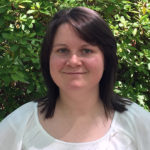Stroke Study
Research study: A comparison of chiropractic care response characteristics between post-rehabilitation patients of ischemic versus hemorrhagic stroke
Introduction:
During a stroke, a region of the brain experiences a decrease in blood supply and loss of oxygen. This can happen when the blood supply to the brain becomes blocked (ischemic stroke) or when an artery in the brain leaks or hemorrhages blood (hemorrhagic stroke). A stroke may also be referred to as a cerebrovascular event. Individuals in the United States who have experienced a stroke may be faced with a decline in their quality of life. (1) While the likelihood of dying from a stroke has decreased, the number of individuals living with stroke related disabilities has increased. (2)
One challenge is that the increase in individuals living with chronic symptoms post-stroke has resulted in greater demand for rehabilitative services. (3) Despite advances in acute and rehabilitative care, the quality of life for these patients may remain less than optimal. Complicating recovery and therapeutic intervention success are the differences in pathophysiology and possible long-term cortical and functional implications that result from the different type, severity and location of an individual’s stroke. To address the unique and increasing needs of individuals experiencing symptoms post-stroke, additional insight into how the different types of stroke respond to alternative therapies could be beneficial. (4)
Chiropractic care:
At its core, chiropractic is focused on a natural approach to regaining health, improving spinal neurological function, and optimizing wellness and overall personal performance. Chiropractic is derived from the Greek words cheir (hand) and praxis (action), meaning “done by hand”. As a profession, chiropractic has been practiced for more than a century, but its hands-on methods trace back hundreds – if not thousands – of years. Although its roots are in the United States, chiropractors currently treat patients all over the world and help them to achieve better health. About 35 million people in the U.S. are treated by chiropractors each year, according to the American Chiropractic Association.
(Source: https://handsdownbetter.org/about-chiropractic/)
If you’ve never been to a chiropractor before, you may not know much about them. According to the National Center for Complementary and Integrative Health (NCCIH), part of the U.S. National Institutes of Health, “Chiropractic is a licensed healthcare profession that emphasizes the body’s ability to heal itself. Treatment typically involves manual therapy, often including spinal manipulation. Other forms of treatment, such as exercise and nutritional counseling, may be used as well.” (Source: https://nccih.nih.gov/health/chiropractic) Manual therapy, also called an adjustment, involves applying a quick thrust to a joint (by hand or through use of an instrument) in order to restore nervous system and joint mechanical function — correcting what chiropractors often refer to as a subluxation.
Study:
The Life University Center for Chiropractic Research is conducting a research study to better understand how 12 weeks of chiropractic care can affect the brain’s electrical patterns and body movement patterns. The study is focused on individuals who have experienced a stroke and are post-rehabilitation. The research will specifically compare the response patterns of those who have had a hemorrhagic stroke with those who have experienced an ischemic stroke.
Individuals may qualify for the study if they are:
- Over the age of 18 years old
- Experienced an ischemic or hemorrhagic stroke
- Currently not taking any medications that may alter brain patterns
- After standard medical rehabilitation, have not fully recovered physical and mental abilities post stroke
The study will involve visits to the Life University Center for Chiropractic Research (CCR) in midtown Atlanta. During the 12 weeks of focused care, chiropractic visits could be several times a week depending on the care plan. In addition to the chiropractic care, individuals will receive a physical examination and three follow-up assessments. The assessments in the CCR will include a non-invasive evaluation of the brain wave patterns using electroencephalography (EEG), completion of a few surveys, and a movement assessment.
Qualified individuals will receive study treatment and care at no cost. For more information or to see if you qualify, please call the CCR at (770)- 426-2639.
References:
- Hendricks HT, van Limbeek J, Geurts AC, Zwarts MJ. Motor recovery after stroke: a systematic review of the literature. Arch Phys Med Rehabil. 2002 Nov; 83(11):1629-37.
- GBD 2016 Stroke Collaborators. Global, regional, and national burden of stroke, 1990–2016: a systematic analysis for the Global Burden of Disease Study 2016. Lancet Neurol 2019; 18: 439–58.
- Stinear CM, Lang CE, Zeiler S, Byblow WD. Advances and challenges in stroke rehabilitation. Lancet Neurol. 2020 Apr;19(4):348-60.
- Vining R, Salsbury S, Cooley W, Gosselin D, Corber L, Goertz C. Patients receiving chiropractic care in a neurorehabilitation hospital: a descriptive study. Journal of Multidisciplinary Healthcare. 2018;11:223-31.
TEAM MEMBERS
NiAmber Harris, Research Track student scholar. Life University
 |
NiAmber Harris: Principal Investigator NiAmber Harris is a D.C. student at Life University. Born and raised in Savannah, GA, I like to say that I am filled with nothing but southern hospitality. That said, I have a natural tendency for making people feel comfortable in their own element as if they were right at home. This is one of the main reasons that led me to study chiropractic at Life University. Some of our most vulnerable populations of people overtime suffer from a loss of belonging caused by effects from trauma or illnesses. I witnessed this when my grandmother suffered from a stroke 4 years ago. All I wanted to do was to make her feel like herself again as much as possible. Prior to coming to Life University, I never knew much about chiropractic, but what I did know was a general notion that chiropractic gets people moving! Movement is so important and not just for your physical well-being but also your emotional well-being. Immersing myself in the world of chiropractic meant connecting these two phenomena to make a positive difference in people’s lives. Through research, I hope to gain a better understanding of the how the body and its movement respond to chiropractic care. This is only the beginning, and I look forward to the many milestones of this journey. |
Emily Drake: Co-Investigator
 |
Emily Drake is the research lab coordinator for the Sid E. Williams Center for Chiropractic Research at Life University. She is responsible for coordinating student volunteers and work study students in assistance with current projects, including all equipment and software trainings. She assists principal investigators with current projects and brainstorming ideas for future studies. She graduated Summa Cum Laude with a Bachelor of Science in biopsychology from Life University in 2016. She has worked with the Sid E Williams Center for Chiropractic Research since 2016. Her research interests include neuropsychological research and its clinical implications. |
Austin Garlinghouse, Research lab coordinator, Dr. Sid E. Williams Center for Chiropractic Research. Life University
 |
Austin Garlinghouse: Co-Investigator Austin Garlinghouse is the research lab coordinator for the Sid E. Williams Center for Chiropractic Research at Life University. He is responsible for coordinating student volunteers and work study students in assistance with current projects, including all equipment and software trainings. He assists principal investigators with current projects and brainstorming ideas for future studies. He graduated with a Bachelor of Science in Psychology from Reinhardt University in 2018. |
Sherterica Hall, DC Study clinician
 |
Sherterica Hall, DC: Co-Investigator Dr. Sherterica Hall (sher-terry-cah) I think the human body is a phenomenal work of art. It’s amazing what our bodies can do. I address your well-being on a physical and metaphysical level. Above. Down. Inside. Out. Honestly, this journey started because of ego. I wanted to hold the title of doctor. I started out as a massage therapist and fell in love with the human body. While in Massage school I met a Chiropractor who was doing house calls, adjusting and massaging. It sounded cool and like something I would enjoy. Once I was introduced to Chiropractic philosophy, I was hooked. I found it beyond fascinating what our bodies are capable of. I knew more people needed to know how amazing we’re supposed to feel and what actual healing looks like. So ego may have got me here, but my passion for healing and the wonders of our anatomy, keeps me thriving |
Akiliah E. Johnson, DC Study clinician
 |
Akiliah E. Johnson, DC: Co-Investigator Dr. Akiliah E. Johnson considers herself a facilitator of innate intelligence. She is a true believer of the philosophy that “The power that made the body, heals the body.” Akiliah initially attended Life University with the intentions of acquiring pre-requisite courses for a local nursing program. However, after resonating with the philosophy of Chiropractic, she felt she found her calling. She understands that the human body naturally seeks proper balance among all its systems, which are meant to work together. As a chiropractor, Dr. Johnson’s goal is simple – assist individuals with improving their health and balancing their systems by removing that which restricts or diminishes their body’s innate intelligence. B.J. Palmer stated it best, “While other professions are concerned with changing the environment to suit the weakened body, chiropractic is concerned with strengthening the body to suit the environment.” |
Margaret Sliwka, DC Study clinician, Dr. Sid E Williams Center for Chiropractic Research
 |
Margaret Sliwka, DC: Co-Investigator |
Stephanie G. B. Sullivan, DC, PhD: Co-Principal Investigator (Research)
 |
Stephanie Sullivan, D.C., Ph.D. is a graduate of Life University and the University of Georgia’s Interdisciplinary Neuroscience Program within the Biomedical and Health Sciences Institute. Dr. Sullivan serves as the Director of the Life University Dr. Sid E. Williams Center for Chiropractic Research (CCR). Her research focus includes development of the Well-being and Health Expression Evaluation List (WHEEL), cognitive efficiency and the effect of chiropractic and applied clinical neuroscience care on brain-body neuroplasticity.. |
